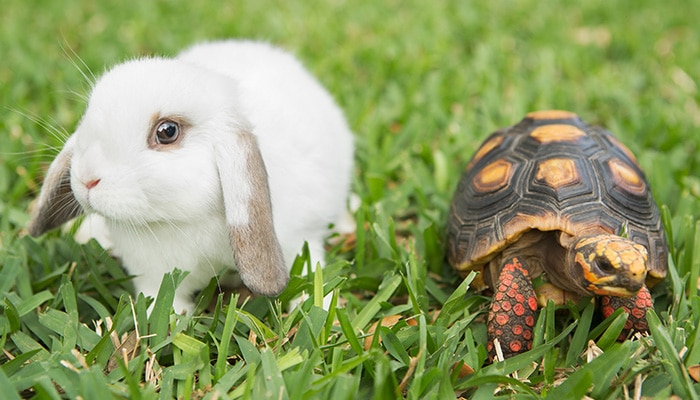While we believe that the books and resources recommended may be of value to you, keep in mind that these are suggestions only and you must do your own due diligence to determine whether the materials are appropriate and suitable for your use. PNC has no sponsorship or endorsement agreement with the authors or publishers of the materials listed.
ANIMAL FRIENDS

Animals Move Fast & Slow
Using musical tempo, children will explore different speeds of animals.

Lesson Objective
Children will explore musical tempo as it relates to fast and slow animal movements, and they will participate in movement activities matching musical tempo.
Art
What You'll Need
- Large floor space
- Drum
- Music selections (see Lesson Tips)
- Audio device for playing music
- Masking tape – 1 roll
What To Do
Note: Before beginning the lesson, place a line of tape at opposite ends of the dance space.
- Review the important rules of dance lessons (see Lesson Tips).
- Play some music, and perform the steps of the Warm-Up (see Lesson Tips).
- Have the children sit in a circle. Explain the word “tempo” (see Vocabulary).
- Play some music with a slow tempo, and have the children imagine one of the animals that they have been learning about. Ask them which animal would move slowly, like the music.
- Repeat using music with a fast tempo.
- Tell the children that they will be exploring musical tempo as they move to different speeds of music and then they will be moving at the speed of an animal that matches the speed of the music.
- Using the drum, begin to play an even beat—slow at first, then medium, then fast—while naming the tempo speeds (see Vocabulary).
- Beat the drum in a slow tempo, and have the children pat their thighs or march in place while keeping time to the beat.
- Speed up the tempo, and have the children follow the faster beat. Discuss the different tempos (see Guiding Student Inquiry).
- Have the children line up on the same side of the tape lines. Tell them that they will be moving at speeds that match the different tempos to the other line, and then they will freeze on the tape line.
- Have a child name a slow-moving animal, such as a turtle. Tell the children to move at the speed of that animal to the other tape line while keeping to the beat of the drum.
- Play the drum at a slow tempo as children move. Remind children to stay in their own self-space.
- Repeat the activity with animals that move at a medium tempo, such as a fox or a dog; then, repeat the activity with animals that move at a fast tempo, such as a gazelle or a deer.
- Play some music, and perform the steps of the Cool Down (see Lesson Tips).
Resources
Home School Resources
Home educators: use these printable lesson PDFs to teach this lesson to your home schoolers. They're available in English and Spanish.
Content Provided By
Common Core State Standards Initiative – These lessons are aligned with the Common Core State Standards ("CCSS"). The CCSS provide a consistent, clear understanding of the concepts and skills children are expected to learn and guide teachers to provide their students with opportunities to gain these important skills and foundational knowledge [1]. Visit the CCSS


